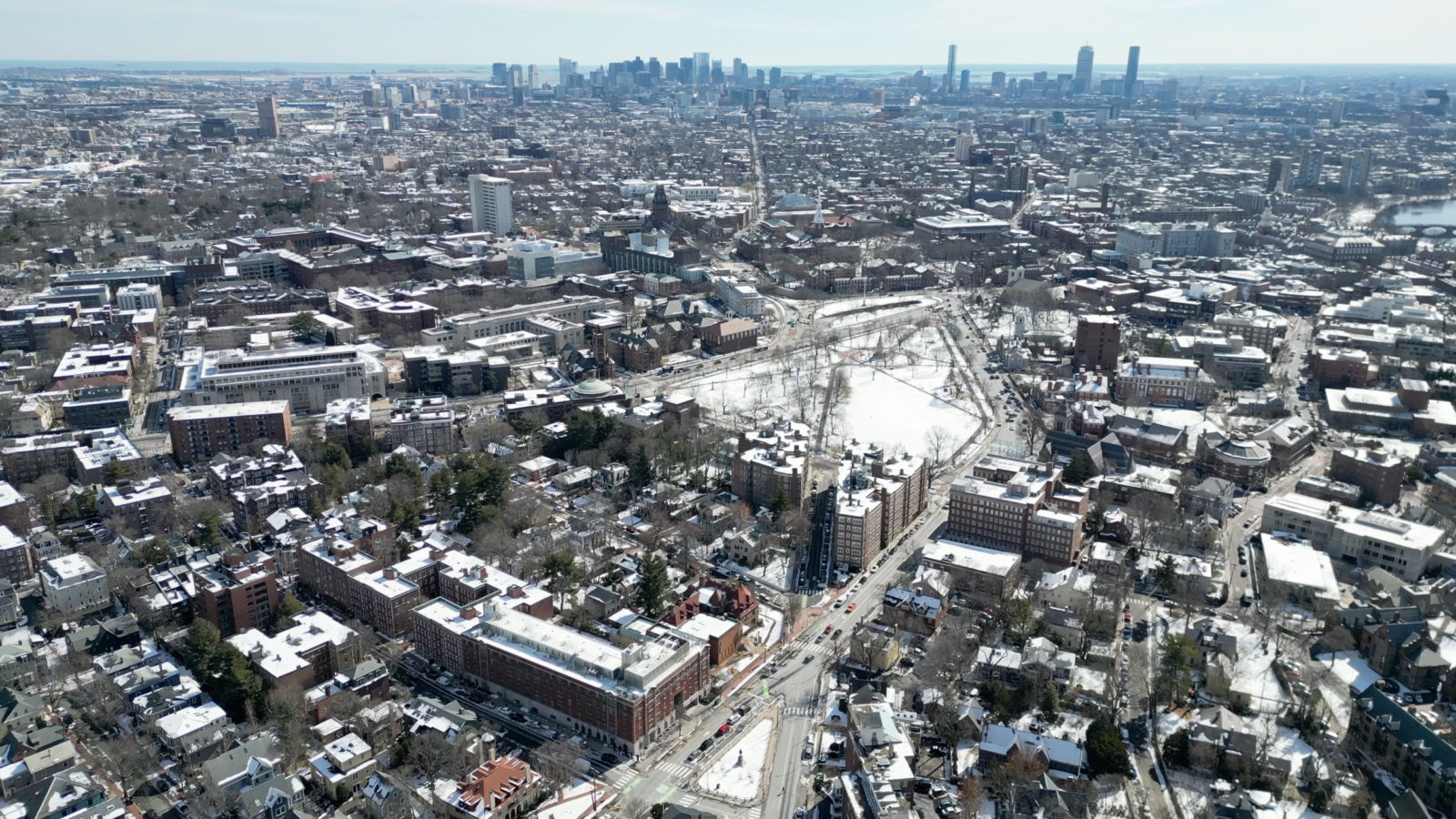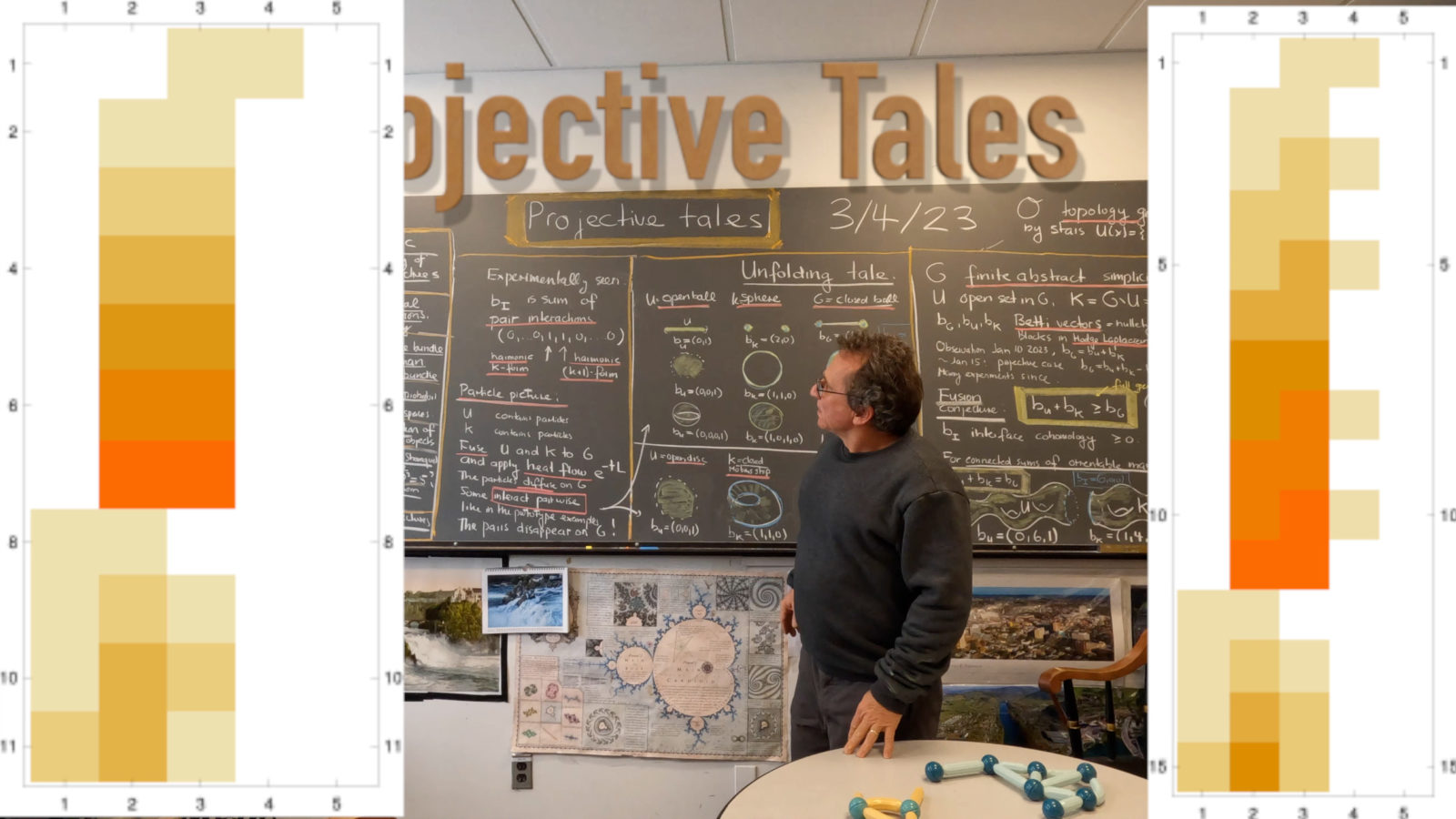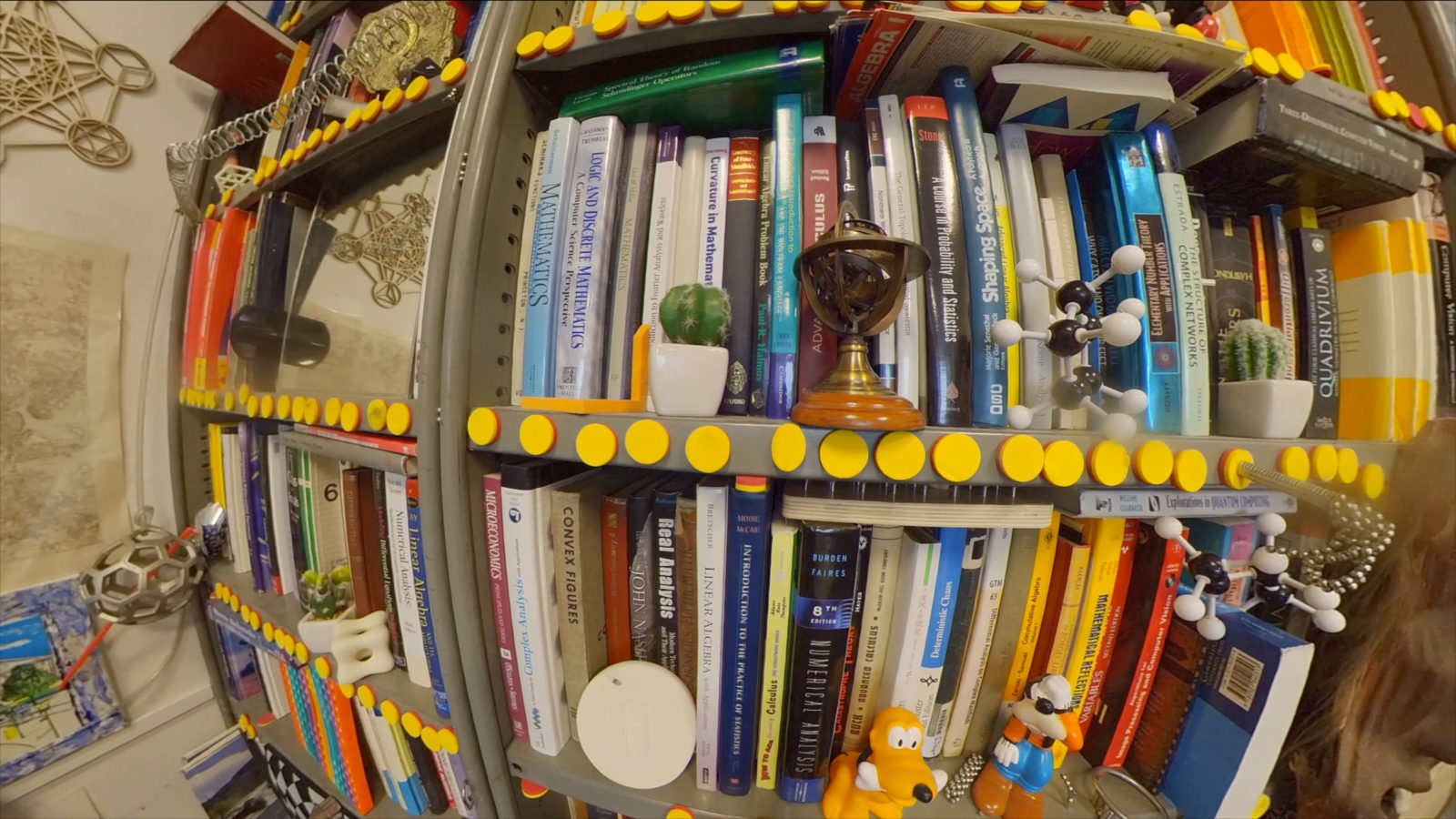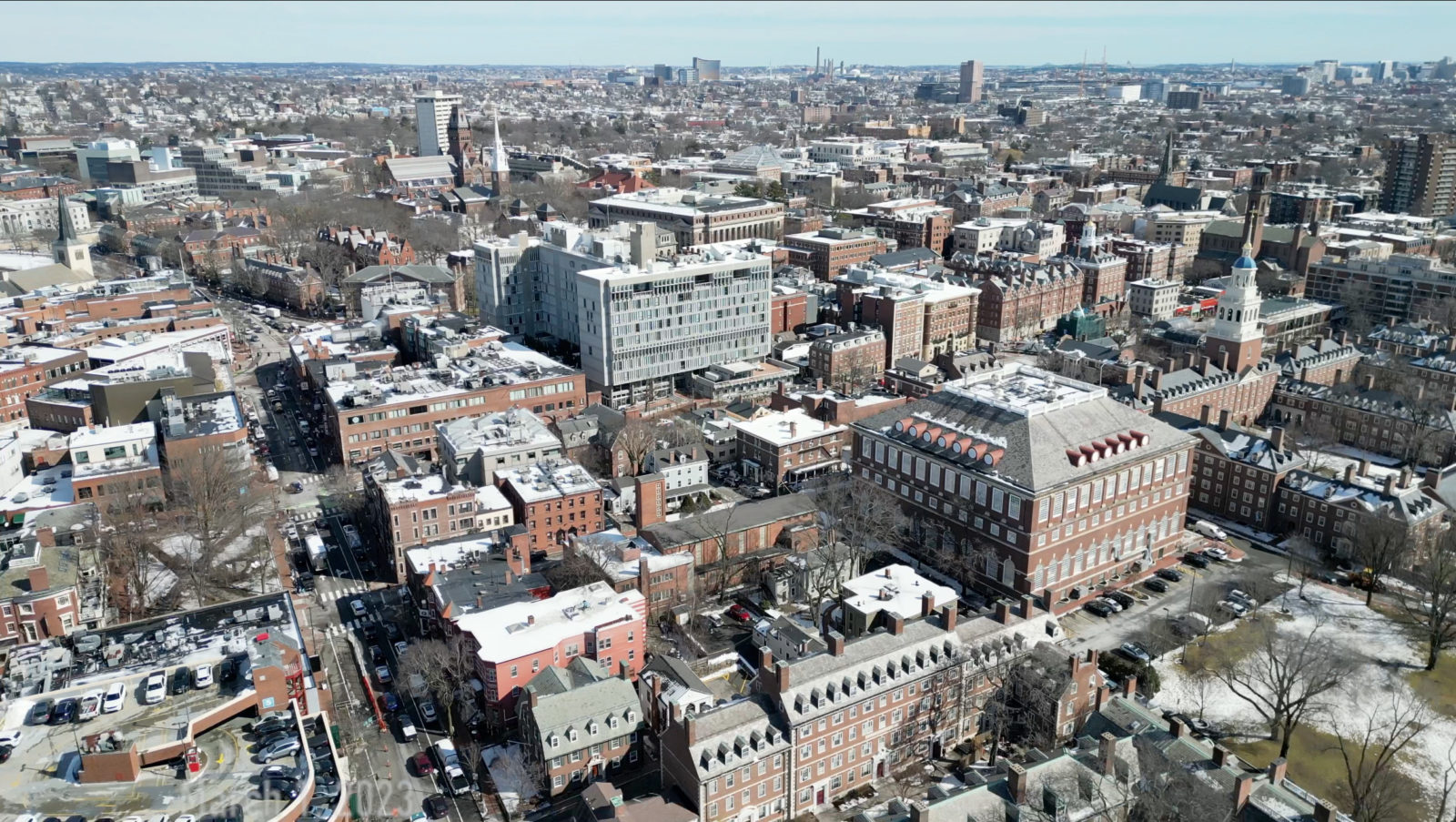This is a bit more of an update on the fusion rule with
. What we need to show is that there is a linear map from
. A nice example is the projective plane, featured here as the “Oberwohlfach surface” (it is an implementation of the Boy surface minimizing the Wilmore energy. In some sense the most natural embedding of the projective plane in Euclidean space). In that case one can take
the closed Moebius strip and
the open disk. Then
and
. We have
and
. In the middle of the board is an other nice example to illustrate the fusion: it is when we fuse an open ball U with its closed boundary K leading to the closed ball G. Lets look at the three dimensional open ball for example, where
and where the sphere has
and where the closed ball has $b_G = (1,0,0)$. Now the interface cohomology is
. This means that during the fuse, a 2-form and a 1-form have fused. The picture is that if we take the heat flow generated by the Laplacian L then these two harmonic forms diffuse and disappear during the merge. The claim is that if we start with a pair of harmonic forms on K and U and glue them together then apply the heat flow we get a harmonic form on G and that all of the harmonic forms can be reached by this linear transformation, then we have what one calls a short exact sequence
. This is a fancy way just to say that the linear map is surjective. The fundamental theorem of linear algebra then assures that
is isomorphic to the image
. A the moment the surjectivity is not yet shown (and as mentioned before, I do not think this is difficult). What would be nice of course is to have the map explicit. Given the pair H,K find an explicit linear transformation which maps
to
. We like to think about this then as a scattering problem. The particles which were originally living separately on U and K get to become particles on G. During the process (and that is what one has to show), no new particles can appear. Also equivalent is the inequality
.












